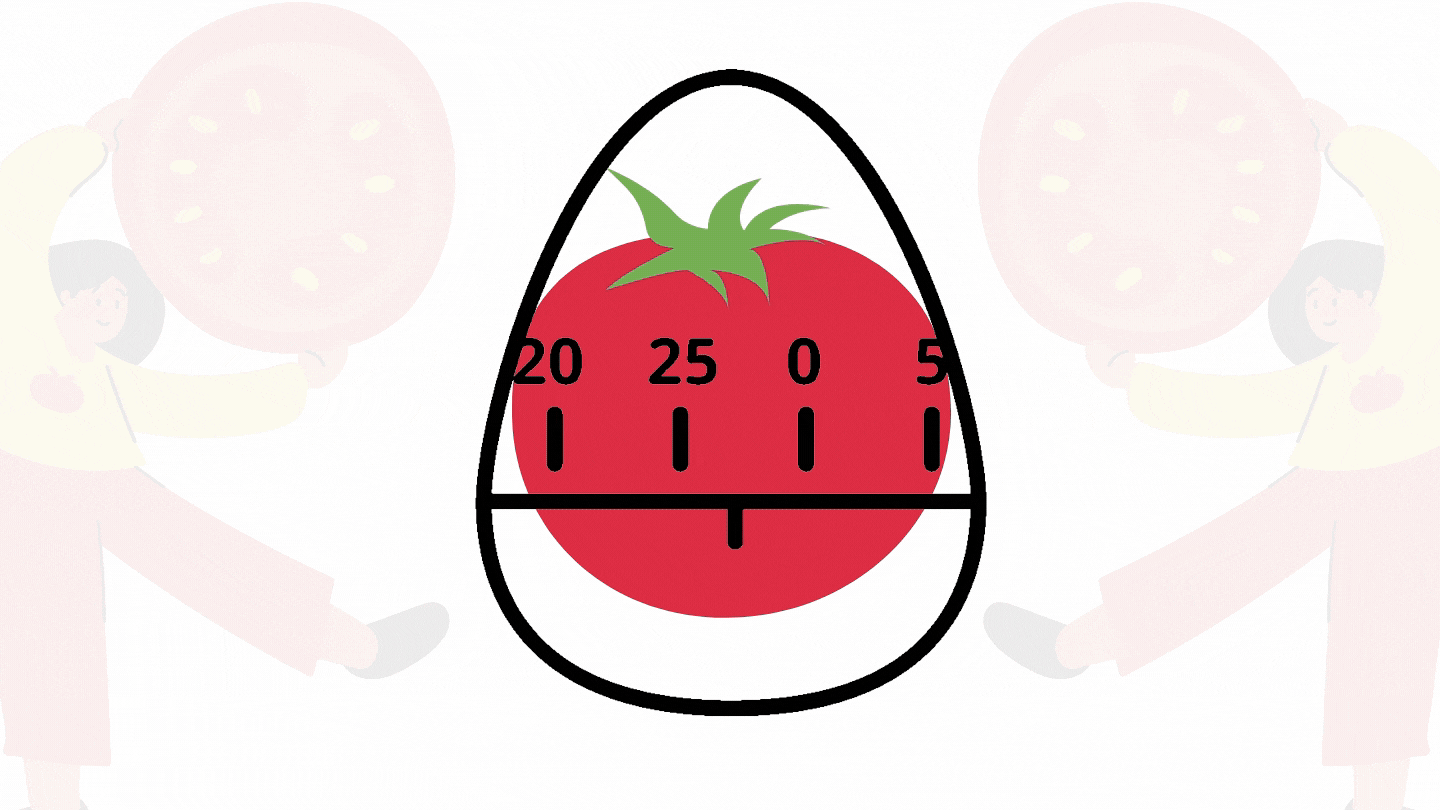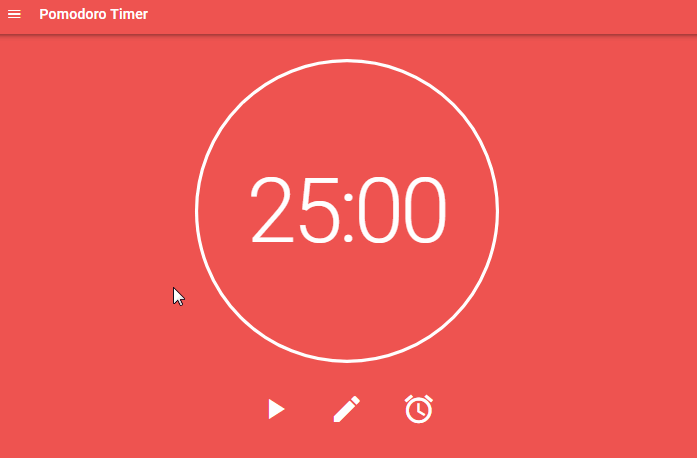What is the Pomodoro technique?
Pomodoro Technique is a time management method explained by Francesco Cirillo in the 1980s. The timer is set to break down work into parts. Generally, 25 minutes are taken in length and separated by short breaks. Each interval is known as a Pomodoro, by the Italian word for ‘tomato,’ Cirillo got the idea of tomato after the tomato-shaped kitchen timer he used as a university student.
This technique is widely popularized in websites and apps, providing all the necessary details and functions. Concepts like timeboxing and iterative and incremental development are used in software design, and the method is adopted in pair programming contexts.
- Make a to-do list and note time for them.
- Set the timer for 25 minutes and focus on a single work until the time is up and the timer rings.
- When the time is up, mark off one Pomodoro and note what task you completed.
- Then take a 5-minute break.
- After 4 pomodoros, take a more extended, more refreshing 15-30 minute break.

Variations in Pomodoro technique
Various variations are there on the Pomodoro Technique. To better suit the working style of every individual, these variations are there.
Some variations are:
- Work in 90-minute time blocks. Besides a 25 minute focus period, work for 90-minute blocks. It reflects a natural concentration cycle.
- Work in natural time blocks. There are natural time markers in one’s life: like the period between classes, or the time until parents come home, or the time until the work gets done. These can be used to define focus periods.
- Monitor time blocks of naturally high productivity, and from this data, work out the best productivity system.
These approaches preserve the core Pomodoro Technique principle of working in specific time blocks, but they adjust the periods to suit individual needs better.
What makes Pomodoro technique effective?
It makes it easy to get started
It is seen that procrastination is a cause of laziness and lack of self-control. To avoid negative feelings, people tend to hide behind social networking sites and Netflix.
Rather than trying to take up a big project, try to take smaller steps to start. If this also is not working, divide the smaller project into tasks and take up one task at a time. Doing something little at one time is better than taking up a big project all at once.
Pomodoro is that procrastination-busting strategy that helps break down the projects, tasks, and assignments into smaller ones that you need to do in just 25 minutes. It allows you to concentrate on the smaller tasks, and you do not get overwhelmed by the enormous project all at once.

Fighting distractions
sWe, humans, get very easily distracted, we tend to check our messages, emails, pop-up notifications very frequently. It all affects our concentration level and decreases our efficiency. We also tend to blame technology for all the distractions, but studies say that almost 50% of the distractions are self-created. We think it will just take 1 min to check the notification or 30 seconds to reply to someone. As a result, we pull ourselves out from the focus.
Pomodoro technique helps to regain focus and increase the concentration level. As there are breaks in between, which helps to regain the focus and we feel refreshed. The breaks work like a refreshment button and get the attention back to work.

Knowing where the time goes
We generally plan our schedule with time deficiency. We tend to underestimate the time required for a task, while we know that the same task took more time in the past. But we wish to do the task in lesser time now.
Pomodoro technique prevents us from planning fallacy. When we start working with shorter time intervals, time constraints are not a problem, as short time periods are now not an abstract thing but a concrete event. Those 25 minutes are then not a general period but a period for a particular task/ event. It leads to more realistic time allotment and utilization.
Writer Ben Dolnick after using this technique, quoted that:
Five minutes on the internet, as measured by my timer, would pass in what seemed to me about 35 seconds. A timed hour of research would seem to take between three and four hours. My timer was a crisp metal yardstick laid down in the fog of my temporal intuitions.
Ben Dolnick

It helps improve your productivity
Every new Pomodoro gives an opportunity to improve the last one. Cirillo says that “concentration and consciousness lead to speed, one Pomodoro at a time.” Pomodoro technique is more comfortable and more doable as it is more about consistency than perfection. Each new session is a fresh start, which you can start with to complete your goals and work and limit distractions. You can make the system work according to your convenience.
In the end, we would say, motivate yourself to do something extra every day, add 1 Pomodoro every 3 days. Challenge yourself to complete big projects by dividing them into small tasks and several Pomodoros. Set a goal for a number of pomodoros you will do daily, and don’t break the chain in between.
Thinking about a number of tomatoes is much more fun than thinking in hours.






